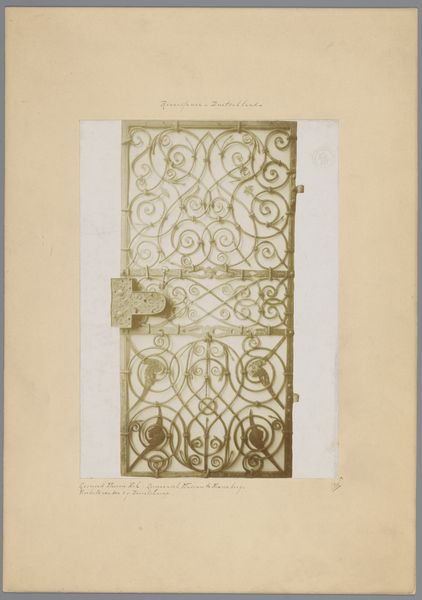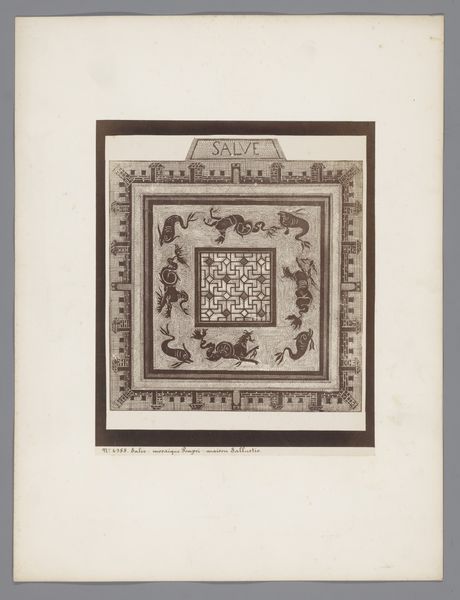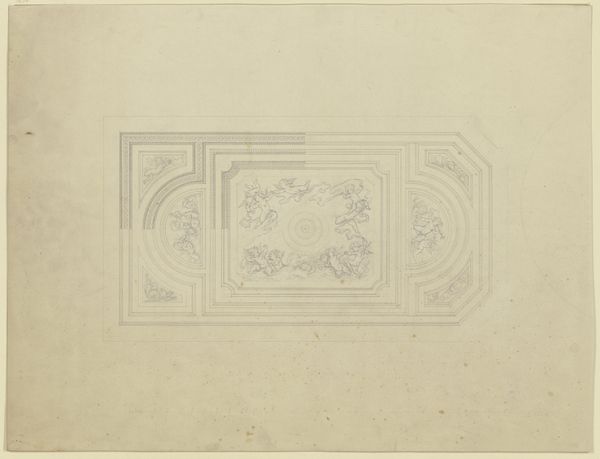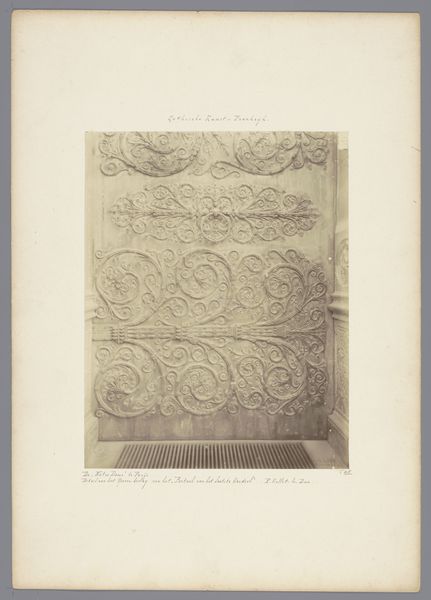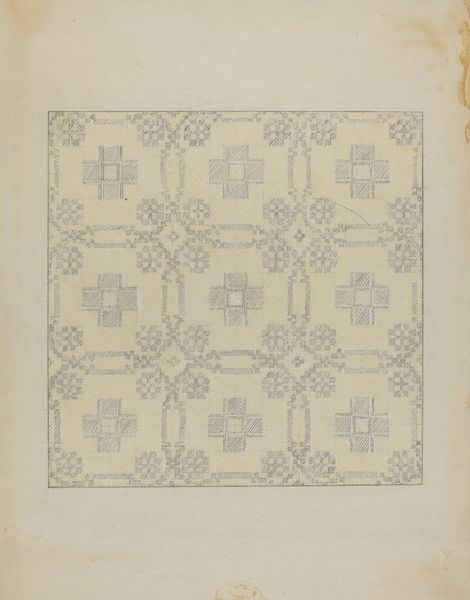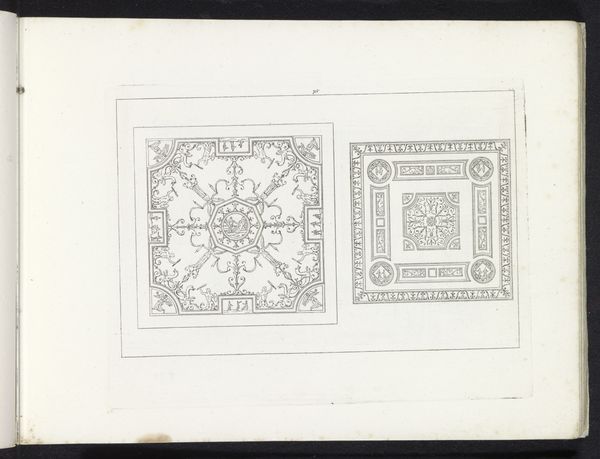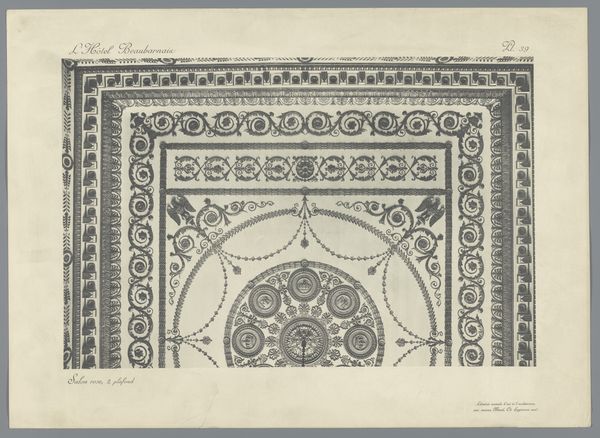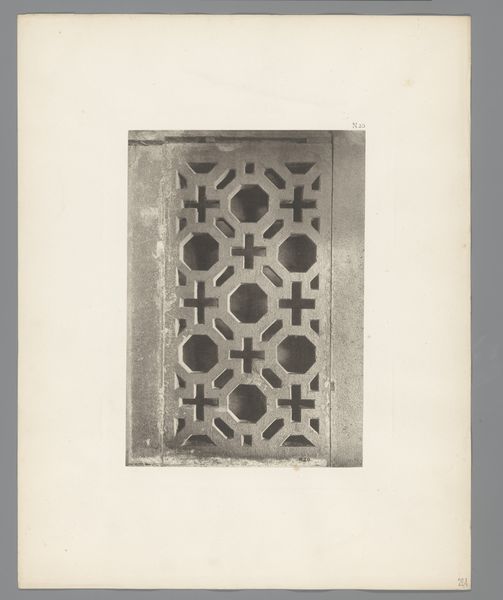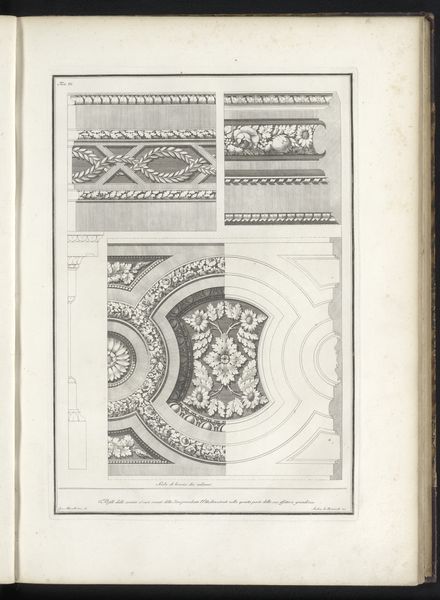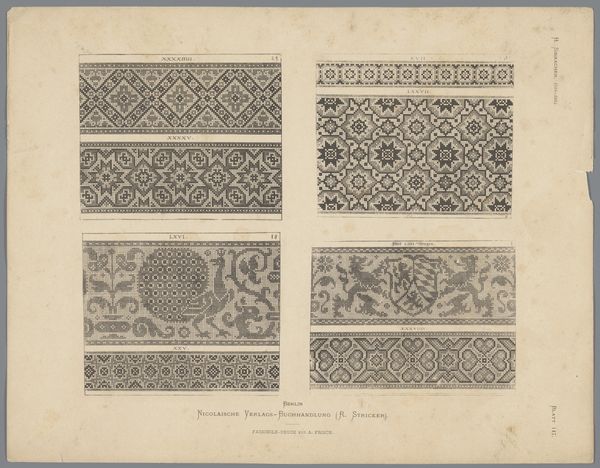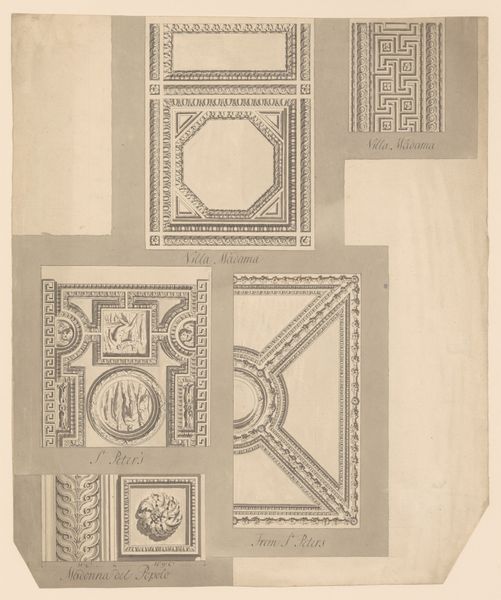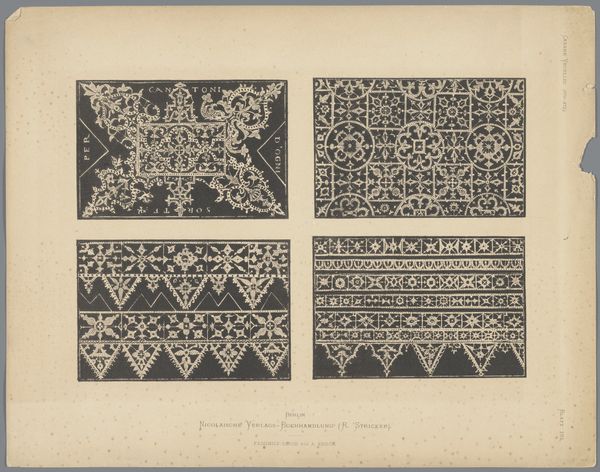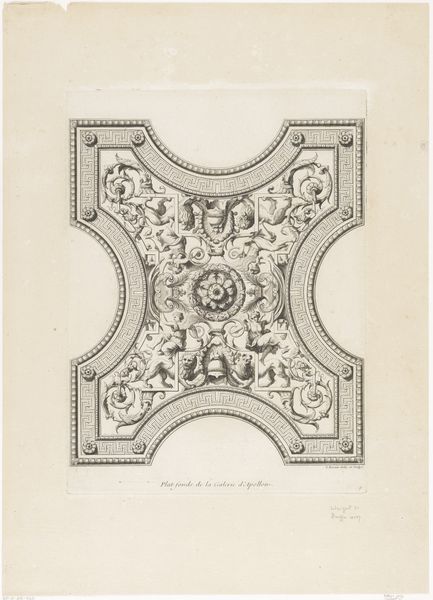
Gezicht op een plafond in de Galerie Henri II van het Kasteel van Fontainebleau, Frankrijk before 1875
0:00
0:00
print, photography, collotype, site-specific, architecture
# print
#
photography
#
collotype
#
geometric
#
site-specific
#
architecture
#
realism
Dimensions: height 349 mm, width 257 mm
Copyright: Rijks Museum: Open Domain
Curator: Looking up, we see "Gezicht op een plafond in de Galerie Henri II van het Kasteel van Fontainebleau, Frankrijk"—a photograph of a ceiling. It comes to us from before 1875, through the lens of Médéric Mieusement. It's now held at the Rijksmuseum. Editor: My immediate impression is this is more than decoration; it’s a meticulously constructed power statement, all captured in muted tones. The geometry feels rigid and almost overwhelming. Curator: That's perceptive. The Gallery of Henri II was indeed about projecting power. The ceiling would have been part of an environment designed to impress visiting dignitaries and consolidate the king's image. We must understand this as site-specific and deeply intertwined with the building's role in French history. Editor: Exactly! Think about who had access to spaces like this—elites, nobility. The ornate designs served to exclude others, to constantly reinforce the existing social hierarchy. The octagons, diamonds, even the floral motifs contribute to this controlled environment of privilege. I'm drawn to consider the way wealth is visualized in design like this. Curator: Absolutely, and this photograph itself, through its production and circulation, reflects those dynamics. The collotype printing process was gaining prominence then, offering a way to disseminate these images, but even that access was largely mediated by wealth and social status. While it aimed for realism, the very act of photographing and distributing the image alters its meaning. Editor: Right, and realism as a style often conveniently omitted the realities of everyday lives for many. What is ‘real’ is always determined by perspective and power, in the social dynamics surrounding both its original context and this modern presentation within a museum space. Curator: Mieusement’s photography here inadvertently documents the cultural norms of his time as much as he intended to create an exact representation. Editor: In some ways, observing what seems initially ornamental can be a way to discover deeper connections, offering fresh considerations on societal principles. Curator: I agree, it pushes us to consider not just the beauty or the craftsmanship, but also the values and the systems that shaped it, and how the presentation of it continues to speak across the years.
Comments
No comments
Be the first to comment and join the conversation on the ultimate creative platform.
